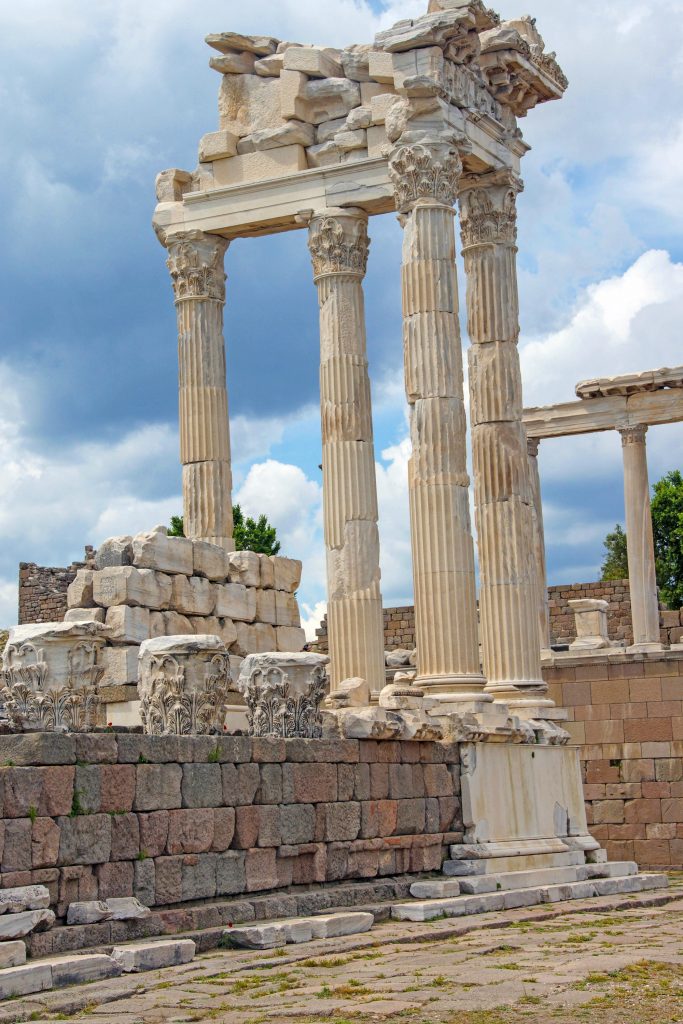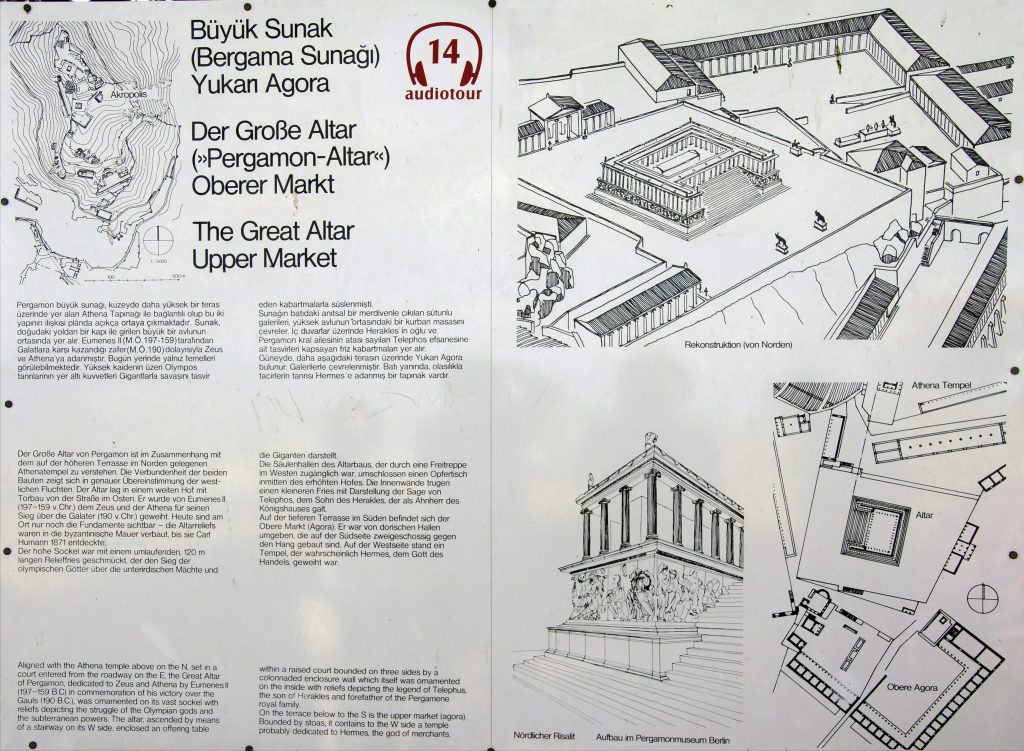Ancient site of Pergamum, also known as Pergamon or Pergamos, is located in the northwest of Turkey. Its rich history spans several millennia, with significant cultural, political, and historical developments. We visit this site on our 2024 small group tour

Ancient Greek Period (4th – 3rd century BCE): Pergamum was initially a part of the Persian Empire and then came under the rule of Alexander the Great and his successors. It gained prominence during the Hellenistic period when it became the capital of the Attalid dynasty. The Attalids transformed Pergamum into a thriving cultural and intellectual center.
Attalid Dynasty (3rd – 2nd century BCE): The Attalid rulers, particularly Attalus I and Eumenes II, invested heavily in Pergamum’s development. They built impressive structures such as the Altar of Zeus (considered one of the Seven Wonders of the Ancient World), the Pergamon Library (which housed thousands of scrolls), and a famous theater. Pergamum became a major hub of learning and art.
Roman Republic and Empire (2nd century BCE – 4th century CE): In 133 BCE, Pergamum’s last ruler, Attalus III, bequeathed his kingdom to Rome upon his death. This marked the beginning of Pergamum’s integration into the Roman Republic and later the Roman Empire. It was also Rome’s first province in Asia Minor. Pergamum continued to thrive as a regional center and was renowned for the Asclepion, its medical school.


Christianity and Early Byzantine Period (4th – 6th century CE): Pergamum was mentioned in the Book of Revelation. It was one of the seven churches to which the Apostle John wrote letters. These letters conveyed messages of encouragement and admonition to the Christian community in Pergamum. The city also had a significant Christian presence during the early Byzantine period.
Decline and Abandonment (7th – 13th century CE): Pergamum’s decline began in the 7th century when the region came under the control of the Byzantine Empire. The city gradually lost its importance as other centers gained prominence. It was further affected by invasions, including those by Arab forces. Eventually, the city was abandoned, and its former glory faded.
Today, visitors to the archaeological site can explore the remnants of Pergamum’s grandeur, including its theater, temples, library ruins, and the site of its famous altar.
From my journal:
From the modern city of Bergama, we enter the site of the ruins of Pergamum — climbing the sometimes-steep path up to the most dramatic acropolis in Asia. Moving through the ruins of the Temple of Athena and the agora we reach the impressive Trajaneum.


The agora was built on a terrace, partly cut into the hill, partly supported by massive arches which also serve as high vaulted granaries. We descend through series of arches following the lower sections, leading to the Hellenistic theatre carved into the hillside.


One of my (many) favorite ancient theatres – both the steepest & most impressive. The plays must have been compelling to keep the audience’s attention from wandering to the incredible vistas.




From here, we walk past the former site of the Altar of Zeus
[the actual altar was removed to Berlin by German archaeologists],

At the base of the city, we visit the Asclepion, the ancient HMO where patients came for treatment and cures.
Asclepius (or Asklepios) was the Greek god of healing and medicine
and his sanctuaries were places where people sought healing through a combination of medical treatments, rituals, and divine intervention. The Asclepion of Pergamum was one of the most famous and revered healing centers in the ancient world. It was built on multiple terraces on the hillside of the city. It included temples, treatment buildings, patient sleeping quarters, a theater and library. Vaulted, underground passages connect the various sites.
You can include Pergamum in a 3 day trip from Istanbul, basing in Canakkale and also visiting the Gallipoli battlefield, the Dardanelles, Troy and Assos.
Download royalty-free images of Pergamum
Order prints, greeting cards, clothing, and other merchandise
Our latest small group tours
Turkey Travel blog